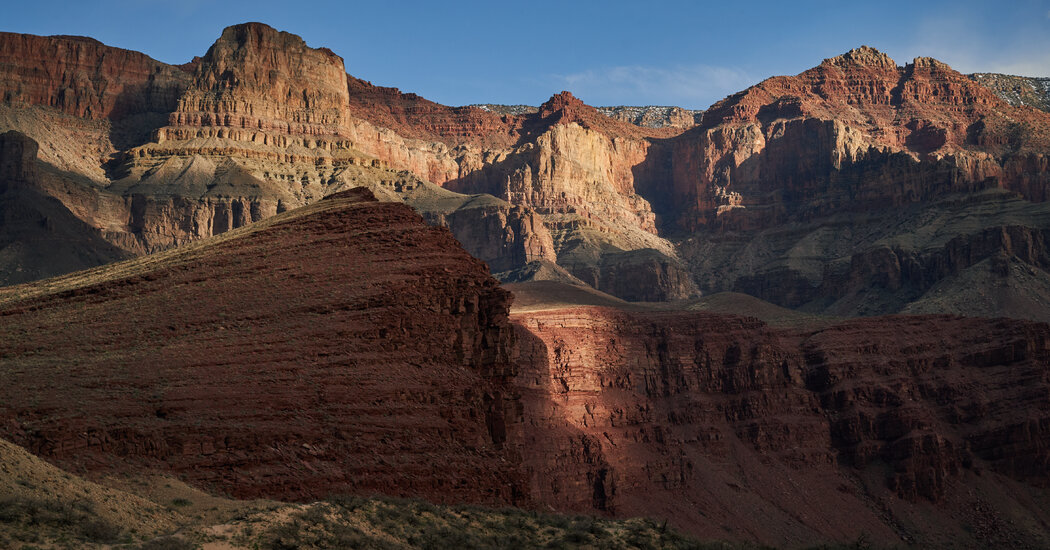Times Insider explains who we are and what we do and delivers behind-the-scenes insights into how our journalism comes together.
Walking a dog during the summer in Phoenix begins with a test: Hold the back of your hand to the sidewalk for a few seconds. If your hand can’t take the heat, neither can your dog’s bare paws.
Since returning to Phoenix from a 36-hour reporting trip in Grand Canyon National Park, I’ve added another step to my routine: I throw my T-shirt in the kitchen sink and soak it with “cold” water. Park rangers recommend the trick for hot days, and I can testify that it makes a huge difference. During triple-digit temperatures, the only way to experience anything resembling a cooling sensation is to feel moisture wicking off your skin.
You might think that living in the Southwest would automatically build up your tolerance for this kind of heat. But the reality for most people living through summer in the Sonoran Desert is that life unfolds indoors. You scuttle from a temperature-controlled house to your baking car, crank the air-conditioning and, within a few minutes, arrive at another man-made oasis.
With its supermarket and steakhouses, hotels and chilled coach buses, Grand Canyon Village extends this bubble to the edge of the wilderness. For a recent article that appeared in the Travel section of The New York Times, I wanted to understand how the park’s search-and-rescue staff mitigated risk in this borderland, a place where you can buy a milkshake a few steps away from a trail that leads to some of the world’s most rugged terrain.
Much of that work is focused on what rangers call preventive search-and-rescue, known as P-SAR, which amounts to making sure people have the information and supplies they need to get through a hot hike.
Talking to rangers who have watched people reach critical condition within a couple of miles of an air-conditioned food court has a way of changing your perspective on risk. Even as an avid hiker with a few years of desert living under my belt, I realized while reporting this article that I had never really considered the hows and whys behind lifelong trail habits, like snacking on potato chips or dipping a bandanna in the river.
In “Desert Solitaire,” the naturalist Edward Abbey famously railed against the paved roads and utility projects being pushed into remote parts of the country. “Why is the Park Service so anxious” to cater to “the indolent millions…
Click Here to Read the Full Original Article at NYT > Travel…
